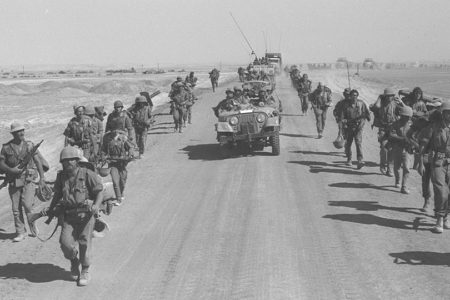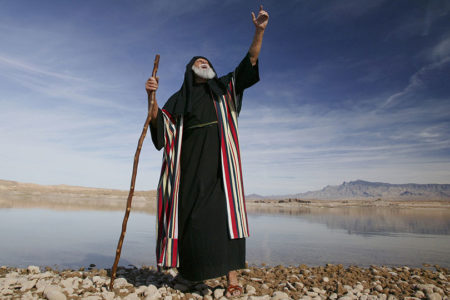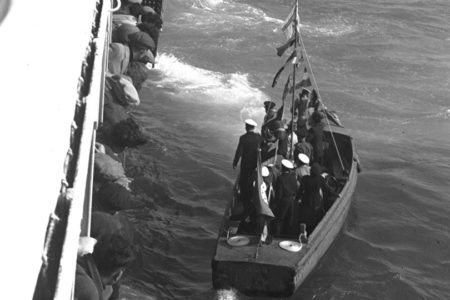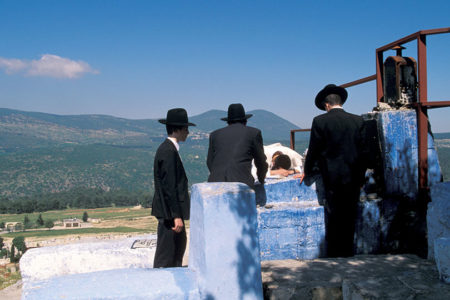The Arab Riots of the 1920s
A prevailing sentiment around the world seems to be that if Israel had never gained its independence, the Arabs would be happy; and there would be peace. But Arab terrorism started long before the State of Israel existed.
When the Allied Powers defeated the Ottoman Turkish Empire in World War I, they found a Middle East in need of stabilization and direction. The San Remo Conference of 1920, held to determine a strategy for the region, ruled that Great Britain would oversee the area that included what are today Israel, Jordan, and Iraq.
Arab nationalists were angered by British rule, in part because of Britain’s 1917 Balfour Declaration that viewed “with favour the establishment in Palestine of a national home for the Jewish people.” Encouraged by British Christians who favored the plan, the Balfour Declaration’s allotment for a Jewish homeland approximated the biblical land grant. According to British historian Sir Martin Gilbert, “The total area of Arab lands in Arabia was 1,184,000 square miles. Palestine, the only portion of former Turkish territory set aside for a Jewish National Home, covered less than 11,000 square miles.”1 But even that tiny slice of territory was more than the Arabs were willing to let the Jews have.
Haj Amin al-Husseini, an Arab nationalist who had served in the Ottoman army and later partnered with Adolf Hitler, began organizing small groups of Arabs called fedayeen (Armenian, “those who sacrifice themselves” or “redeemers”). The fedayeen attacked Jewish farms in the Jordan Valley and Galilee, trying to discourage Jewish immigration and drive Jewish people from the land.
Most Jews were not intimidated. They organized themselves into paramilitary groups, one of which was the Haganah (Hebrew, “defense”), the forerunner of today’s Israel Defense Forces.
During Passover of 1920, Arab violence from the north spread into Jerusalem. For three days, Arabs attacked Jewish bystanders with sticks, knives, and stones. The Jews defended themselves. But British response was slow, and five Jews and four Arabs were killed.
By 1921 Haj Amin al-Husseini organized more fedayeen to terrorize Jewish residents. He instigated riots in Jaffa and Petah Tikvah. Dozens of Jews were killed and hundreds wounded. Yet they continued to immigrate to their homeland, hoping to leave anti-Semitism and poverty behind.
The Jewish population of Palestine doubled to 150,000 by 1929. Arab terrorists waged constant anti-Zionist campaigns. By then, Haj Amin al-Husseini was the grand mufti of Jerusalem. When thousands of Jewish people gathered at the Western Wall on August 15, 1929, for Tisha B’Av to commemorate the destruction of their Temple, they were met by Arab mobs pelting them with stones. These mobs had been told the Jews had cursed Islam and were meeting to destroy the al-Aqsa Mosque and Dome of the Rock. The Arab cry was to defend the holy sites and drive out the Jews.
On August 23 more than 1,000 Arabs attacked the Jewish people in Jerusalem. In all, 133 Jews were killed and 339 wounded. The British killed 116 Arab jihadists. Anti-Jewish propaganda spread quickly, as faked pictures of a destroyed al-Aqsa Mosque and Dome of the Rock were circulated in Jerusalem and Hebron.
Hebron was a community of Arabs and Jews who had lived together for centuries. They shared a holy site, the Cave of the Patriarchs, which Abraham purchased as a burial place for his wife Sarah (Gen. 23). Also buried there are Abraham, Isaac, Jacob, Rebekah, and Leah. The Arabs base their claim to the site on their association with Abraham, making this City of the Patriarchs sacred to both religions.
As the August 23, 1929, riots in Jerusalem raged, 700 Arabs congregated in Hebron, armed with sticks, axes, and knives. Initially, they were going to Jerusalem to defend the al-Aqsa Mosque, believed to be under attack. Instead, they overpowered the lone British policeman stationed to keep the peace and began a house-to-house, search-and-destroy mission against the Jewish people of Hebron.
Two dozen Arab officers were supposed to be assisting the British police, but they did little to stop the angry mob. On the other hand, several Arab families rescued hundreds of Jews, providing shelter in their own homes.
The killing rampage left 64 Jews slaughtered, nearly 10 percent of the Jewish population of Hebron. The brave Arab families that sheltered their Jewish neighbors saved an estimated 400 Jewish people. When British reinforcements finally arrived, they evacuated the surviving Jews.
Jewish people returned to Hebron in 1931 and stayed until 1936 when Arab riots again forced the British to evacuate them. Hebron stayed Jewless until after the 1967 Six-Day War.
Today Hebron is the largest city in Judea-Samaria (West Bank) and is home to about 130,000 Arabs, 530 Jews, and three Christians, according to the Jewish Virtual Library. The city has continued to know incidents of violence and bloodshed ever since the Arab riots of the 1920s.
Throughout the 1920s, the Arabs attacked Jewish settlements. In 1929 in Safed, they killed 20 Jewish people, mostly children and old people; wounded 32 others; and tortured several.
The Arabs were no happier before Israeli statehood than they are now. Their goal then was the same as it is today: the elimination of all Jewish people from Israel and the Middle East.
ENDNOTE
- Sir Martin Gilbert, The Routledge Atlas of the Arab-Israeli Conflict, 7th ed. (London: Routledge, 2002), 7.







